
Ragnar von Holten (born 12 March 1934 in Gleiwitz, [1] Silesia; died 26 September 2009 in Stockholm) was a Swedish art historian, painter, printmaker, book illustrator and museum curator. [2]

Ragnar von Holten (born 12 March 1934 in Gleiwitz, [1] Silesia; died 26 September 2009 in Stockholm) was a Swedish art historian, painter, printmaker, book illustrator and museum curator. [2]
Von Holten came to Sweden in 1937 with his family who left Nazi Germany. After graduating, he studied art history. During a trip to Paris in 1953 he had contacts who gave him the mandate on the artist Gustave Moreau. He traveled for many years between Stockholm and Paris, and he became a link between French and Swedish surrealists. He became a member of the Surrealist circle around André Breton. While he spent time in Stockholm with artists such as Eric Grate, Endre Nemes, Gösta Kriland, Öyvind Fahlström and Thea Ekström.
In 1965 he defended his thesis on Gustave Moreau, and in 1969 he published his most famous book, Surrealism in Swedish art, regarded as a standard work. The same year, he became Associate Professor in Art History in Stockholm. He was in a sequence Senior Curator at the National Exhibition (1968–82), National Museum (1982–97) and the Modern Art Museum (1998–2000). Between 1985–88 he was Director of the Swedish Institute in Paris. As an artist, he made his debut in 1960 in Gothenburg and Lund. Surrealism was his theme, both in his art practice as in his art, scientific works. In 2008 he had a major retrospective exhibition at Malmö Art Museum.
After his death, von Holten's art collection was donated to the Art Academy, and proceeds from sales became the nucleus for the Ragnar von Holten Memorial Fund, which would award scholarships to promising artists. [3]
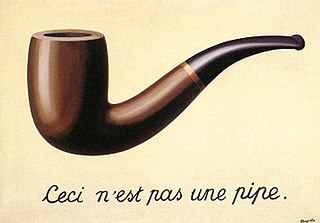
Surrealism is an art and cultural movement that developed in Europe in the aftermath of World War I in which artists aimed to allow the unconscious mind to express itself, often resulting in the depiction of illogical or dreamlike scenes and ideas. Its intention was, according to leader André Breton, to "resolve the previously contradictory conditions of dream and reality into an absolute reality, a super-reality", or surreality. It produced works of painting, writing, theatre, filmmaking, photography, and other media as well.

Max Ernst was a German painter, sculptor, printmaker, graphic artist, and poet. A prolific artist, Ernst was a primary pioneer of the Dada movement and Surrealism in Europe. He had no formal artistic training, but his experimental attitude toward the making of art resulted in his invention of frottage—a technique that uses pencil rubbings of textured objects and relief surfaces to create images—and grattage, an analogous technique in which paint is scraped across canvas to reveal the imprints of the objects placed beneath. Ernst is noted for his unconventional drawing methods as well as for creating novels and pamphlets using the method of collages. He served as a soldier for four years during World War I, and this experience left him shocked, traumatised and critical of the modern world. During World War II he was designated an "undesirable foreigner" while living in France.

Gustave Moreau was a French artist and an important figure in the Symbolist movement. Jean Cassou called him "the Symbolist painter par excellence". He was an influential forerunner of symbolism in the visual arts in the 1860s, and at the height of the symbolist movement in the 1890s, he was among the most significant painters. Art historian Robert Delevoy wrote that Moreau "brought symbolist polyvalence to its highest point in Jupiter and Semele." He was a prolific artist who produced over 15,000 paintings, watercolors, and drawings. Moreau painted allegories and traditional biblical and mythological subjects favored by the fine art academies. J. K. Huysmans wrote, "Gustave Moreau has given new freshness to dreary old subjects by a talent both subtle and ample: he has taken myths worn out by the repetitions of centuries and expressed them in a language that is persuasive and lofty, mysterious and new." The female characters from the Bible and mythology that he so frequently depicted came to be regarded by many as the archetypical symbolist woman. His art fell from favor and received little attention in the early 20th century but, beginning in the 1960s and 70s, he has come to be considered among the most paramount of symbolist painters.

Meret Elisabeth Oppenheim was a German-born Swiss Surrealist artist and photographer.

Dorothea Margaret Tanning was an American painter, printmaker, sculptor, writer, and poet. Her early work was influenced by Surrealism.

Georges Papazoff was a Bulgarian painter and writer. He became prominent in Paris, worked and died in France. He was among the first surrealists, and was an acquaintance of Joan Miró, Max Ernst and Pablo Picasso.
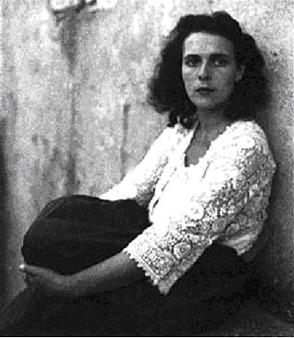
Mary Leonora Carrington was a British-born, naturalized Mexican surrealist painter and novelist. She lived most of her adult life in Mexico City and was one of the last surviving participants in the surrealist movement of the 1930s. Carrington was also a founding member of the women's liberation movement in Mexico during the 1970s.

Karl Gunnar Vougt Pontus Hultén was a Swedish art collector and museum director. Pontus Hultén is regarded as one of the most distinguished museum professionals of the twentieth century. He was the pioneering former head of the Museum of Modern Art in Stockholm and in the 1970s he was invited to participate in the creation of the Centre Georges Pompidou in Paris, where he was the first director of the Musée National d'Art Moderne (MNAM) in 1974–1981.

Eric Grate was a Swedish sculptor, painter and graphics artist.
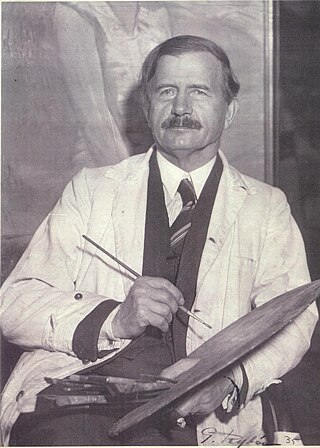
David August Wallin was a Swedish artist. In 1932 he won an Olympic Gold Medal in the art competitions of the Olympic Games in Los Angeles for his oil painting "At the Seaside of Arild".
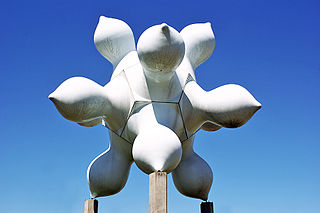
Saint Clair Cemin is a postmodern sculptor.

Women Surrealists are women artists, photographers, filmmakers and authors connected with the surrealist movement, which began in the early 1920s.

Jupiter et Sémélé is a painting by the French Symbolist artist Gustave Moreau (1826–1898). It depicts a moment from the classical myth of the mortal woman Semele, mother of the god Dionysus, and her lover, Jupiter, the king of the gods. She was treacherously advised by the goddess Juno, Jupiter's wife, to ask him to appear to her in all his divine splendor. He obliged, but, in so doing, brought about her violent death by his divine thunder and lightning. The painting is a representation of "divinized physical love" and the overpowering experience that consumes Semele as the god appears in his supreme beauty which has been called "quite simply the most sumptuous expression imaginable of an orgasm".
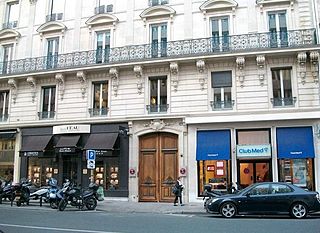
The Exposition Internationale du Surréalisme was an exhibition by surrealist artists that took place from January 17 to February 24, 1938, in the generously equipped Galérie Beaux-Arts, run by Georges Wildenstein, at 140, Rue du Faubourg Saint-Honoré in Paris. It was organised by the French writer André Breton, the surrealists' brain and theorist, and Paul Éluard, the best known poet of the movement. The catalogue listed, along with the above, Marcel Duchamp as generator and arbitrator, Salvador Dalí and Max Ernst as technical advisers, Man Ray as head lighting technician and Wolfgang Paalen as responsible for the design of the entrance and main hall with "water and foliage". The exhibition was staged in three sections, showing paintings and objects as well as unusually decorated rooms and mannequins which had been redesigned in various ways. With this holistic presentation of surrealist art work the movement wrote exhibition history.
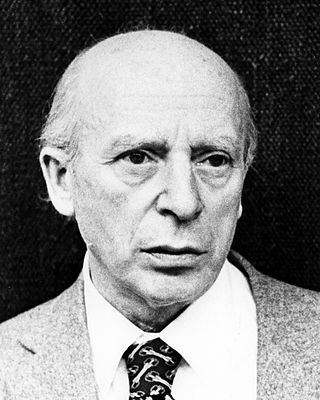
Endre Nemes was a Hungarian-Slovako-Czecho-Swedish Surrealist artist who had a background in Lyrical Abstraction. While his early exhibitions included tailors' dummies and écorchés, he was notable in Sweden for his use of enamels in public art.

Léon Arthur Tutundjian was an Armenian painter who achieved fame in France.

Oedipus and the Sphinx is an 1864 oil on canvas painting by Gustave Moreau that was first exhibited at the French Salon of 1864 where it was an immediate success. It is now in the Metropolitan Museum of Art. The work was a fresh treatment of the established subject of the meeting between Oedipus and the Sphinx on the road outside Thebes, as described in Sophocles's play Oedipus Rex.

Gösta Axel Kriland was a Swedish surrealist artist, book illustrator and cartoonist.

Bernard Childs (1910–1985) was an artist who worked in Paris and New York. He was primarily a painter and printmaker, and pioneered the direct engraving of metal plates with power tools. As a kind of counterpoint to his many-layered work, which is often symbolic and a fusion of abstraction and figuration, in 1959 he also started painting portraits. Childs' formal interests were line and space, light and color, and the dialogue of contrasting elements.
Geneviève Lacambre is a French honorary general curator of heritage, and has been the Chargée de mission at the Musée d'Orsay.